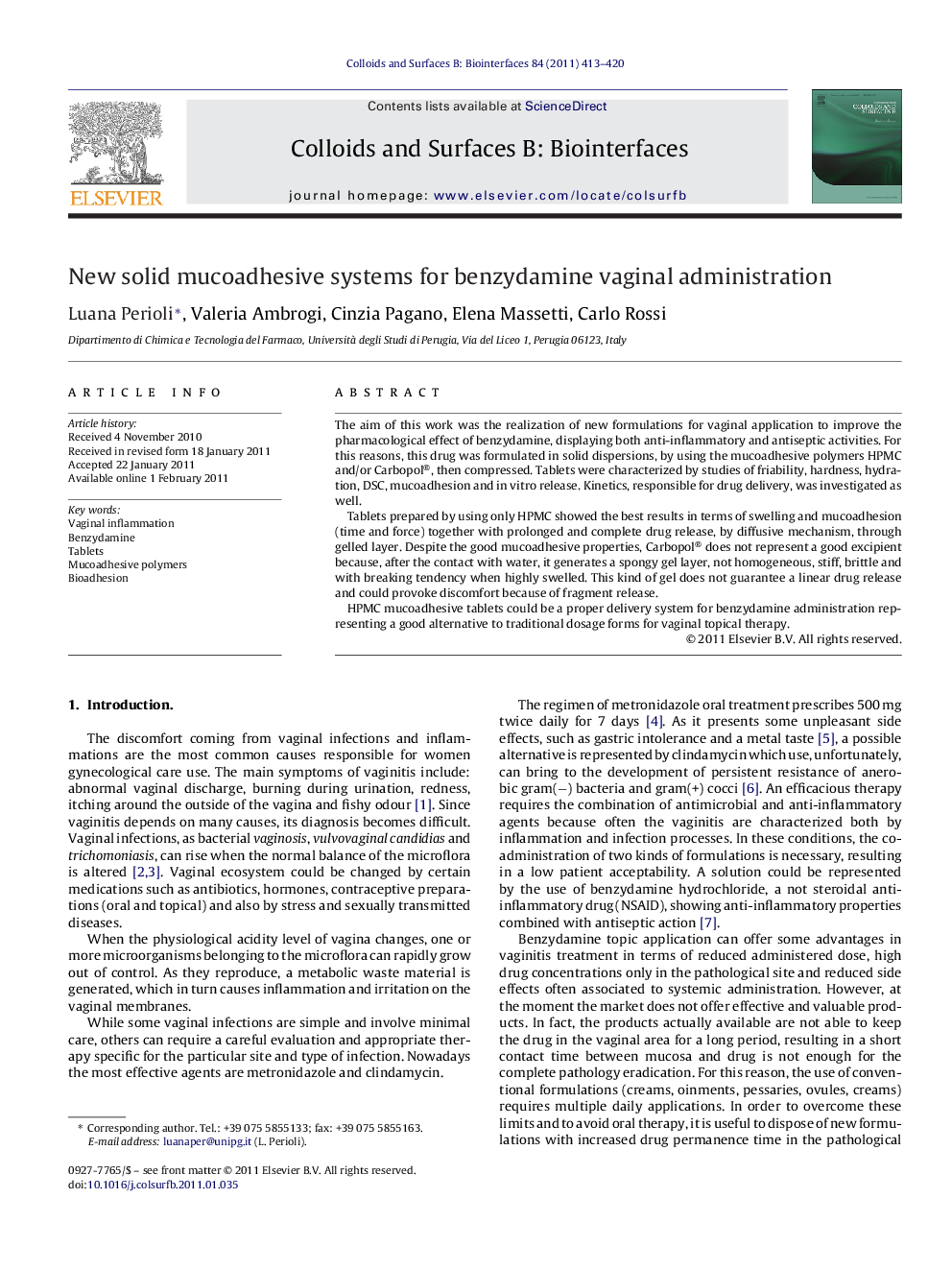| Article ID | Journal | Published Year | Pages | File Type |
|---|---|---|---|---|
| 601147 | Colloids and Surfaces B: Biointerfaces | 2011 | 8 Pages |
The aim of this work was the realization of new formulations for vaginal application to improve the pharmacological effect of benzydamine, displaying both anti-inflammatory and antiseptic activities. For this reasons, this drug was formulated in solid dispersions, by using the mucoadhesive polymers HPMC and/or Carbopol®, then compressed. Tablets were characterized by studies of friability, hardness, hydration, DSC, mucoadhesion and in vitro release. Kinetics, responsible for drug delivery, was investigated as well.Tablets prepared by using only HPMC showed the best results in terms of swelling and mucoadhesion (time and force) together with prolonged and complete drug release, by diffusive mechanism, through gelled layer. Despite the good mucoadhesive properties, Carbopol® does not represent a good excipient because, after the contact with water, it generates a spongy gel layer, not homogeneous, stiff, brittle and with breaking tendency when highly swelled. This kind of gel does not guarantee a linear drug release and could provoke discomfort because of fragment release.HPMC mucoadhesive tablets could be a proper delivery system for benzydamine administration representing a good alternative to traditional dosage forms for vaginal topical therapy.
Graphical abstractFigure optionsDownload full-size imageDownload as PowerPoint slideResearch highlights► Mucoadhesive tablets for benzydamine vaginal administration were prepared by using the mucoadhesive polymers HPMC and/or Carbopol®. ► Tablets were characterized by studies of friability, hardness, hydration, DSC, mucoadhesion. ► In vitro drug release and kinetics were investigated. ► HPMC mucoadhesive tablets resulted suitable for benzydamine vaginal administration.
